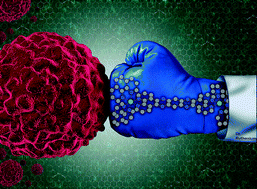Monomeric and dimeric coordinatively saturated and substitutionally inert Ru(ii) polypyridyl complexes as anticancer drug candidates
Abstract
Due to the increasing impact of cancer on worldwide mortality, more and more attention is being devoted to the investigation of novel anticancer strategies. Among these, chemotherapy plays a key role in fighting cancer. This explains the increasing engagement of both the pharmaceutical industry and academia towards the discovery of new chemotherapeutic agents. In recent years, metal-based drugs have attracted much attention due to their atypical physico-chemical properties compared to organic molecules. After the approval of cisplatin as a chemotherapeutic agent in 1978, several types of metal-based drugs have been explored. Among them, Ru-based anticancer drug candidates have become a central subject in this research field. However, most of the Ru-based compounds investigated over the last two decades express their cytotoxicity with a mechanism of action involving, among others, a ligand-exchange mechanism. In this Review, we give a complete overview of a specific class of antiproliferative ruthenium complexes, namely coordinatively saturated and substitutionally inert Ru(II) polypyridyl complexes. This implies that the cytotoxicity observed comes from the entire complex and not from ligand-exchange. In this Review, we present monomeric and dimeric Ru(II) polypyridyl complexes, which have been found to be toxic to cancer cells. More specifically, monomeric Ru(II) polypyridyl complexes are analysed considering their direct interaction or not with DNA as the cause of cell death, while dimeric Ru(II) polypyridyl complexes are classified according to their biological targets. Very importantly, the cellular targets of these complexes are discussed in detail. Indeed, several targets were identified and different mechanisms of action were suggested.



 Please wait while we load your content...
Please wait while we load your content...